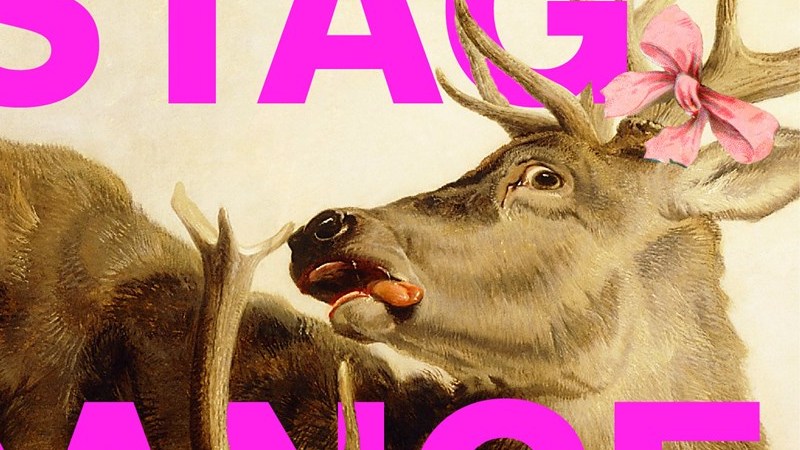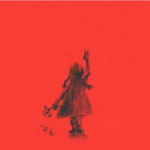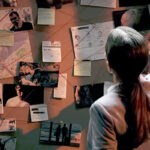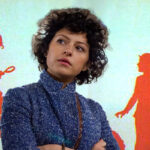How to Find Michel de Montaigne’s Estate (Or Get Hopelessly Lost Trying)
When a Pilgrimage Becomes its Own Kind of Essay
“So vain and frivolous a thing is human prudence, and athwart all our plans,
counsels, and precautions, Fortune still maintains her grasp on the results.”
–Michel de Montaigne, Various Outcomes of the Same Plan
I whisper the words “Bordeaux” and “château” into my partner’s ear. We’re binging a murder mystery on our pet-stained couch, but distractedly, I’m making plans. The money I’ve put away after every birthday, odd job, and Craigslist sale will go toward plane tickets, train tickets, the cutest little Airbnb. Our “vacation fund” is ripe for the picking.
I think seeing a monument is the proper way to mark a momentous occasion; I’ve graduated with my master’s degree, and the monument I want most to see is Michel de Montaigne’s estate in southwestern France. A squat stone tower, the very place the “father of the essay” lived and worked in the 16th century, still stands. “Yes,” I tell my partner, “We’ll see the Louvre, we’ll see the Eiffel Tour,” but I also gently remind him who opened the account. I insist on this pilgrimage to a holy site—the birthplace of the essay.
If my life is an essay, this trip is a transition, the small but necessary scaffolding that structures days. I am moving away from student and toward writer, France representing the inbetweeness of my present. There’s a question I want to answer: How does an essayist live inside her own walls? I want to touch them. I need to see.
Though the city of Bordeaux is often cited as Montaigne’s home—he served as mayor, as did his father—the estate is close to 50 miles from the city, along the Dordogne River. If we want to keep our reservation at the cozy Bordeaux apartment with books stacked on the floor and origami cranes dangling from the ceiling, we’ll have to find a way to reach the countryside. Directions to the estate, in English, can be found on the official Château Michel de Montaigne website, but the notes are vague—a list of three train stations, two airports, and travel times by car from five cities. The information is barely enough to type into a search bar.
I comb the results, but unlike with Notre Dame, the Champs-Élysées, or any other popular destination with artfully-constructed itineraries and brutally-honest reviews, tourist-generated directions for visiting Montaigne’s estate don’t exist online either. Getting there, it seems, will be it’s own kind of essay, my savvy and patience on trial.
Before bed I compose an email to the owners of the château who still work the vines and, according to their website, make every effort to preserve the terroir and “diversity of expression of the vineyard of Montaigne.” I pepper my message with nouns and simple verbs I imagine non-native English speakers will understand.
Then, the mystery takes a dramatic, unexpected turn: I close my computer before sending the email, stubbornly “remembering” that I had.
Bordeaux, Day 1
8:30 AM, Gare Montparnasse, Paris
The drive to Los Angeles along the Pacific Coast is long, but picturesque. Ancient trees tower over our car as we zip down the highway; cliffs tumble off into the ocean. We fly across North America and then the Atlantic, a long and stuffy fit of naps and cramps. When describing the pressurized cabin air, someone two rows ahead calls it “a bag of stale Cheetos,” and I nod, feeling hungry enough to want a bag for myself.
In Paris, though, I breathe freely. Six days of sightseeing have renewed a reservoir of awe, my capacity for experiencing wonder and dealing with problems like being stranded, champagne-drunk at the Eiffel Tower in the middle of the night. (The metros had closed, so we coped with swigs of cheap whisky and waited 45 minutes for the next bus. An essay can be like that, traveling an improvisational act.)
But we still don’t know how we’ll get from Bordeaux to Montaigne’s estate, and I’m nervous we won’t get there at all.
A short metro ride from our 20th arrondissement apartment deposits us at the gare, all luggage in tow. We’re over an hour early, but I’d rather not be hurried. I’m the kind of traveler who thrives on eliminating obstacles. Wandering in an unfamiliar place, in an unfamiliar language, can make a person who is only lost look also desperate, stupid, or worse—rude. Leaving with enough time to establish my bearings and investigate all doubts helps control that image. I am cultured and capable. I am intuitive and strong. I am sensitive and skeptical and patient in the right moments.
Plus, I’ve seen those horror films about girls who meet their ends in moments of rushed confusion. Those girls are sometimes kidnapped and sometimes rescued by their fathers, but mine has never been to Europe, and the only person I can expect to do the careful work is me.
When the train arrives, I am already waiting on the platform, holding my partner’s hand. We settle in for a three-hour ride.
12:30 PM, Gare Bordeaux Saint-Jean
On our first day in Bordeaux, we wander. From our cozy apartment on the top floor of a very old and sooty building, we hike through the crowds of Rue Sainte-Catherine toward the old opera house.
Before reaching the end of the crowded street, I ask my partner’s permission to “double check my research” at the city’s free tourist information shop. He’s hungry, but my anxiety is hungrier. Inside, we assume our place at the end of a very long line of sweaty and sunburnt travelers. Somehow, I feel we don’t belong. I’ve done my due diligence, researched our destination for hours that stretched into days—we’re not looking for a dinner recommendation or tickets to a show. But who else can I turn to, if I can’t trust myself?
When a window is free, I smile at a woman with a British flag pinned to her lapel.
“What is the easiest way to get to the Château Michel de Montaigne?”
“You know that’s very far from here, right?”
“Yes, but I thought we’d take the train.”
Bordeaux, Day 2
8:00 AM, Rue Sainte-Catherine
We’ve yet to buy groceries, so the morning is spent finding a corner market and assembling a picnic. We buy a baguette, cold cuts, fromage, and two pommes and take our picnic to the register.
After swiping every item across the scanner except the pommes, the cashier repeats a long and complicated sentence for the second time.
“Parlez vous anglais?”
My cheeks redden, and I try to dissect where the transaction went wrong. I wait self-consciously as a line forms behind us. I imagine all the people in the store checking their watches compulsively. I imagine them ready to scream.
My partner runs to the produce section to fetch the price of the pommes, which seem to be the problem. When he returns, the cashier shakes her head.
My heart hits the floor with a sloppy thud.
A second employee is called over to assist. She looks at the conveyor belt, takes both pommes, and races through the aisles like a familiar backyard, the rolling hillsides of her childhood home. She returns to the register with a barcoded sticker affixed to the pommes, which we forgot to weigh.
“Merci,” I say without making eye contact. I pay for our meal quietly and efficiently.
My partner stuffs the picnic into his backpack, and we hurry to the bus stop the internet says will take us to the gare. The confusion has lost us time. The next bus arrives in 15 minutes; the train departs in 20. Still the essay moves forward, winding its way into the unknown.
9:15 AM, Gare Bordeaux Saint-Jean
The yellow SNCF kiosks are easy enough to spot. Hurriedly, I type in our destination. There is time to reference the notes I took last night, but I don’t bother, worried we’ll miss the train. I type Saint-Émilion, check the departure time, insert a credit card, print the tickets, and rush to the platform. We board just in time to find our seats. The train whisks us across the Garonne River, a 45-minute ride.
10 AM, Gare Saint Émilion
Referencing my notes, I immediately notice the discrepancy. The phone number I’ve scribbled for the taxi service says “Castillon,” not “Saint Émilion”; we haven’t taken the train far enough down the line. This station is small. There is no one to ask for help to ease the worry.
The other travelers who departed our train are headed toward town, which I overhear is a 20-minute walk down a dusty path. I don’t know how far we are from Montaigne’s estate, so I suggest we follow. After five minutes of walking and second-guessing and walking and second-guessing, my partner questions this decision.
“Remember the taxi sign we saw in the parking lot by the station? Let’s call. We can handle 10 cents a minute.”
I grab his hand. We pivot in the dirt, moving simultaneously backward and forward.
12 PM, Château Michel de Montaigne
The taxi arrives quickly, all things considered, and after a ride much further than the driver anticipated, we arrive in a gravel parking lot. I try to steady my breath.
“We’ll take it anyway,” I say to the guide, when she says the tour is entirely in French. It’s the only way we’re going to see inside Montaigne’s tower. The guide says we can ask questions—she speaks English—but the next tour won’t begin for two hours.
I nod. We wanted time to eat and to wander the estate, so we head in the direction of the tower. Through the trees I see the stone, but I want to see more, not the same stones that every visitor sees. An essayist feels an obligation to experience as much as possible and experience it fully, and then there’s the added expectation to make our experience unique. When the leafy canopy breaks, I stop and, turning my back to the tower, ask my partner to take a picture. “Horse!” he shouts, as a miniature black pony gallops through the frame. I maintain an authentic expression of shock. Me, pony, tower—that’s the one. I’ll never have another profile picture for as long as I live.
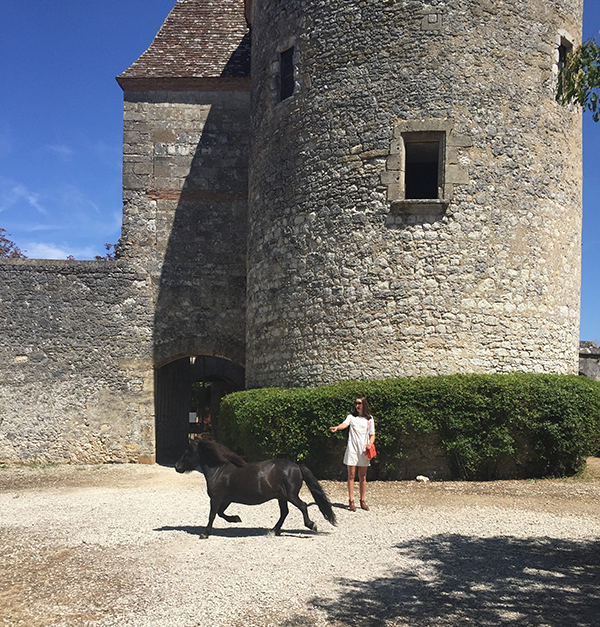
2 PM, Château Michel de Montaigne
Our guide tries to open the old wooden door with a golden, oversized key. She struggles with the lock for several minutes, blaming the centuries in French. Something clicks. The door finally gives. We follow the other visitors inside.
I try to focus on the experience. The guide leads us into the ground floor chapel where Montaigne, Catholic in a time of religious war, prayed and held mass. The chapel ceiling retains a deep blue pigment, the faint suggestion of stars.

In the library, it’s uppermost chamber, I know to keep my eyes on the ceiling, where Montaigne’s favorite maxims in Latin and Greek decorate the wooden beams.
SOLVM CERTVM NIHIL ESSE CERTI
ET HOMINE NIHIL MISERIVS AVT SVPERBIVS
Only one thing is certain: that nothing is certain
And nothing is more wretched or arrogant than man. (Pliny the Elder)
There is no barrier between my body—breath, oily hands, accumulating sweat—and the gorgeously transferred ideas. I wonder if, like a cave’s delicate ecosystem, the boards will change and decay more drastically, more quickly, as more and more bodies pass behind me through the golden-keyed door. Shouldn’t a place like this go on existing forever?
EN ΔEXETAI KAI OYK EN ΔEXETAI
It is possible and it is not possible. (Sextus Empiricus)
On the wall opposite a large desk and chair hangs a simple drawing—pen and ink—of what the room would have looked like lined with some 1,500 books. I try to imagine the scene come to life: 400 years of change erased, a man trying to revise enough of what he knows about life to get it right.
3:30 PM, Château Michel de Montaigne
The mansion, reconstructed after a fire in 1885, is closed to visitors, and we’ve seen most of the grounds already: a small garden, acres of vines, a short path through a thicket that dead-ends too quickly. I suppose I wanted more—a beautiful hike or poignant lesson, a gardener who shared ancient wisdom. Who would tell me where to go. Who to be.
At the end of the tour, all that is left to see is the gift shop, where we scan the labels of the wine called “Les Essais” and “Michel de Montaigne.” I decide I must have a case.
“This is a summer job,” explains a college-aged cashier, when I ask which vintage he prefers. Our best guess, a random assortment, will have to do. What matters is we bought the wine here. The bottles serve as proof of adventure, a story to tell.
While the credit card machine connects to the internet, I explain why I’ve come. “I’m a writer,” I say, “of essays.” The cashier seems uninterested and asks me to sign the receipt. He disappears for a moment and returns with a wooden box. The cashier offers it over the counter—a wine case engraved with the words Château Michel de Montaigne. It reminds me of the ceiling beams. A gift for a special occasion.
Flustered, I forget my French. I can only manage a soft “thank you.”
We step outside feeling the weight of endings.
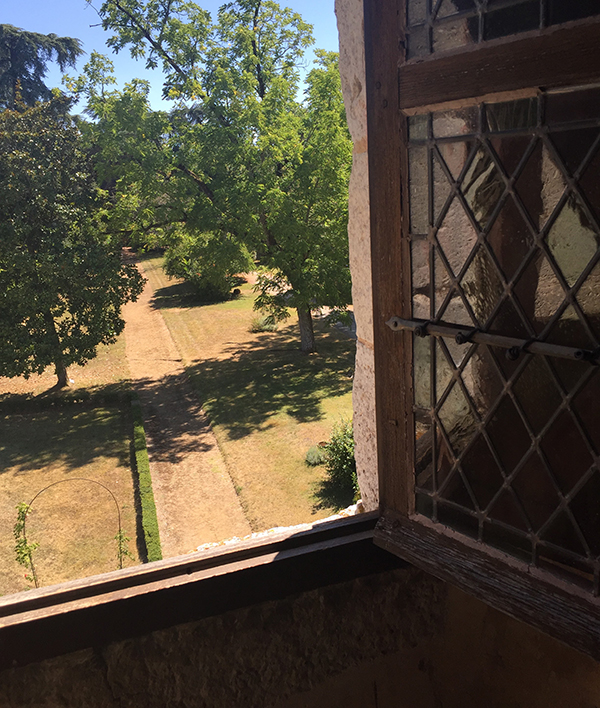
The experience, anticipated for months, has been experienced. We had been working so hard to have it. To buy a case of wine. To stand inside a room. Now that it’s over, I don’t feel much has changed.
The day has grown hot. I redial the number for the taxi service we hired this morning, balancing the wine case between my hip and a tree. When no one answers, I try the number again. When no one answers a second time, I look at my partner and ask “What should we do?”
The cashier and tour guide are surprised to see us back inside the shop. I try to explain the problem—we can’t find a ride to the gare—and ask if they know of a taxi that might pick us up. “Oh yes,” the cashier nods. “One moment.”
He makes a call, and after several minutes and a brief discussion with his coworker, delivers the news. “No one is working,” the tour guide explains. “But if you can wait, I will drive you to the station.”
From the cashier, we buy two cans of orange Fanta and sit on a bench with a view of the tower—a place a person goes to write an essay, getting lost inside her own thoughts. The tour guide will meet us at the end of her shift, and we will enter the gare feeling relieved. At the window, we will buy two tickets for the next train to Bordeaux.
9:30 PM, Rue Sainte-Catherine, Bordeaux
We’ve arrived at the place we began—the doorway of a rented apartment—and pause for a moment to catch our breath. The night breeze drifts in from the Garonne’s dark and glassy surface. Somewhere someone is reading an essay for the first time. I hope that reader gets ideas that lead strange places, opening doors old and new.
I take my time finding the keys, and slowly, we climb four flights of stairs to the top of the building.
The bulb in the hallway times out, but the dark doesn’t feel imposing. Moonlight filters in through patterned slits in the concrete, illuminating a faint path forward. It is enough.
__________________________________
Directions from Bordeaux to Château Michel de Montaigne
The night before: Note train times from Gare Bordeaux-St. Jean to Gare de Castillon, but wait to purchase tickets until you arrive at the station. Tonight, arrange for a taxi to pick you up when your train arrives to drive you to Château Michel de Montaigne. Arrangements can be made at your hotel’s concierge desk, the Bordeaux tourism information office, or by good old-fashioned yellow pages and cellphone. Write down the taxi company’s phone number, and keep it with you in case of emergency. Retrieve cash from an ATM to pay your taxi driver. Charge your cell phone overnight.
Day of travel: Leave early in the morning with enough time to enjoy a full day at the château, travel included. Pack a picnic lunch and plenty of drinking water—neither are available at the estate. Take a city bus from your lodging to Gare Bordeaux-St. Jean (one-way trip, €1,60). Allow fifteen minutes at the station to purchase tickets, locate the platform, and board your train.
– At Gare Bordeaux-St. Jean: Purchase a one-way ticket to Castillon at a freestanding yellow SNCF kiosk, noting return train times. Find your ticket’s corresponding platform, and board the train at least two minutes before it is scheduled to depart (~45-minute ride to Castillon, €12).
– At Gare de Castillon: Find your taxi in the parking lot. If the car hasn’t arrived, call the company or ask for help at the ticket window. Say hello to your driver and hop in the car (~15-minute taxi ride to the chateau, €10). Important: before you exit the taxi, pre-arrange a return trip to Gare de Castillon by asking the driver to pick you up at a specified time.
– At Chateau Michel de Montaigne: Visiting the chateau is free, but the tour—and the only way to see inside the tower—costs € Enter the small gift shop and buy a ticket. Wander the grounds and eat lunch before the tour begins. After the tour, buy at least one bottle of “Les Essais” wine to take home (€8-20, depending on vintage). Wait for your taxi to arrive for your return trip to Gare de Castillon (~15-minute ride, €10). Allow enough time to drive to the station, buy a ticket, and board the train at least two minutes before it is scheduled to depart.
– At Gare de Castillon: Buy your return ticket at the window inside the station. If the ticket window is closed, board the train anyway and purchase your ticket from the staff member checking tickets who will come to your seat (~45-minute ride, €12).
– Total cost of this trip: ~€50 (less of an expense if taxi, wine, and memories are shared with an adventurous, trusting, and forgiving companion).








